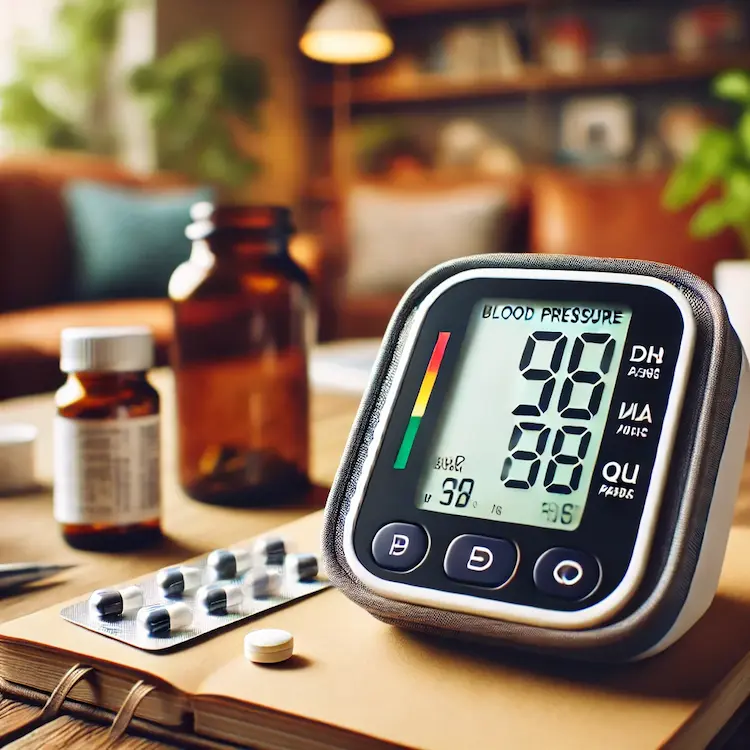Monitoring blood pressure is crucial for individuals with health conditions such as hypertension, diabetes, or cardiovascular disease. A sphygmomanometer for blood pressure monitoring remains the gold standard quality. Whether using an aneroid sphygmomanometer (manual) or a digital blood pressure monitor, understanding how to use it correctly ensures precise results and better management of your health.
This article explains the proper method to use a sphygmomanometer, its importance, and its impact on health and society, particularly in the Philippines’ context. We’ll also compare different methods and provide practical tips for accurate readings.
Why Checking Blood Pressure is Important for People with Health Conditions
Monitoring blood pressure helps manage health conditions and prevent complications like stroke, heart attack, and kidney disease. Individuals with chronic illnesses must check their blood pressure regularly to ensure their treatment plan is effective.
Health & Societal Impact in the Philippines
- Hypertension Prevalence: According to the Philippine Heart Association (PHA), around 37% of Filipino adults have hypertension.
- Medical Costs: Uncontrolled blood pressure contributes to the rising burden on healthcare systems, leading to higher medical expenses and hospitalizations.
- Work Productivity: High blood pressure-related complications affect the workforce, impacting economic productivity.
- Cultural Factors: Many Filipinos rely on traditional medicine, but regular blood pressure monitoring helps integrate modern healthcare practices into everyday life.
Types of Blood Pressure Monitors
There are three main types of sphygmomanometers used in the Philippines:
| Type | Description | Pros | Cons |
|---|---|---|---|
| Mercury Sphygmomanometer | Traditional and most accurate | Highly precise | Bulky, contains mercury (toxic) |
| Aneroid Sphygmomanometer | Manual with a dial gauge | Affordable, portable | Requires training for accuracy |
| Digital Blood Pressure Monitor | Electronic and automated | Easy to use, best for home use | Less accurate if used incorrectly |
For individuals with health conditions, digital monitors are often preferred due to their ease of use. However, aneroid sphygmomanometers are still widely used in clinics and hospitals across the Philippines.
How to Use a Sphygmomanometer Correctly
Follow these steps to ensure accurate blood pressure readings:
Prepare for the Measurement
- Rest for 5 minutes before taking your blood pressure.
- Avoid caffeine, smoking, or exercise 30 minutes before the measurement.
- Sit comfortably in a chair with your feet flat on the ground and back supported.
Position the Cuff Correctly
- Wrap the cuff around your upper arm, ensuring it is snug but not too tight.
- The bottom edge of the cuff should be 1 inch above the elbow.
Using a Manual Sphygmomanometer
- Place the stethoscope diaphragm over the brachial artery (inside of the elbow).
- Inflate the cuff by squeezing the rubber bulb until the gauge reads 30 mmHg above your normal level.
- Slowly release the pressure while listening through the stethoscope.
- Record the first sound (systolic pressure) and the last sound (diastolic pressure).
Using a Digital Blood Pressure Monitor
- Place the cuff correctly on your upper arm.
- Press the start button and relax.
- Wait for the device to measure and display the reading automatically.
Common Errors and How to Avoid Them
| Error | Impact on Reading | Solution |
|---|---|---|
| Arm position too high or low | Incorrect pressure reading | Keep arm at heart level |
| Talking during measurement | Increased blood pressure | Stay silent and relaxed |
| Cuff too tight or loose | Unreliable results | Ensure proper cuff fit |
| Taking measurements too frequently | Fluctuating readings | Wait 1–2 minutes between readings |
When to Check Blood Pressure
For those with health conditions, the best times to check blood pressure are:
- Morning (before medication)
- Evening (before bed)
- Before and after exercise
- When feeling dizzy, lightheaded, or experiencing headaches
Comparing Different Blood Pressure Measurement Methods
Aside from sphygmomanometer for blood pressure monitoring, other techniques exist for measuring blood pressure:
| Method | Description | Accuracy | Suitability |
|---|---|---|---|
| Ambulatory BP Monitoring (ABPM) | 24-hour BP monitoring with a portable device | Very high | Ideal for those with fluctuating BP |
| Home Blood Pressure Monitoring (HBPM) | Regular monitoring at home using a digital sphyg | High | Convenient for self-monitoring |
| Clinic Measurements | BP taken at a doctor’s office | Moderate | May be affected by white coat syndrome |
In the Philippines, many hospitals and barangay health centers offer free blood pressure monitoring, making it easier for Filipinos to track their health.
Practical Tips for Accurate Readings
- Use the right cuff size: An incorrect cuff size leads to false readings.
- Measure at the same time each day: Consistency improves tracking.
- Record readings: Keep a logbook or use a mobile health app.
- Calibrate your device: Ensure accuracy by checking with a professional annually.
Conclusion
Using a sphygmomanometer for blood pressure monitoring correctly is essential for managing health conditions effectively. Whether using a manual or digital monitor, following the right technique ensures accurate and reliable blood pressure readings. Given the high prevalence of hypertension in the Philippines, regular BP monitoring can help prevent complications and improve overall well-being.
Key Takeaways
- Regular blood pressure checks help prevent serious health complications.
- Choose the right device—digital monitors are convenient, but manual sphygmomanometers are more accurate.
- Follow proper measurement techniques to avoid inaccurate readings.
- Check BP at consistent times daily for better tracking.
- Seek medical advice if readings are consistently high or low.
Actionable Recommendations
- Monitor your BP regularly and maintain a health log.
- Use a properly fitted cuff for accurate results.
- Follow lifestyle modifications such as reducing salt intake and staying active.
- Consult a doctor if experiencing symptoms like dizziness, headaches, or chest pain.




